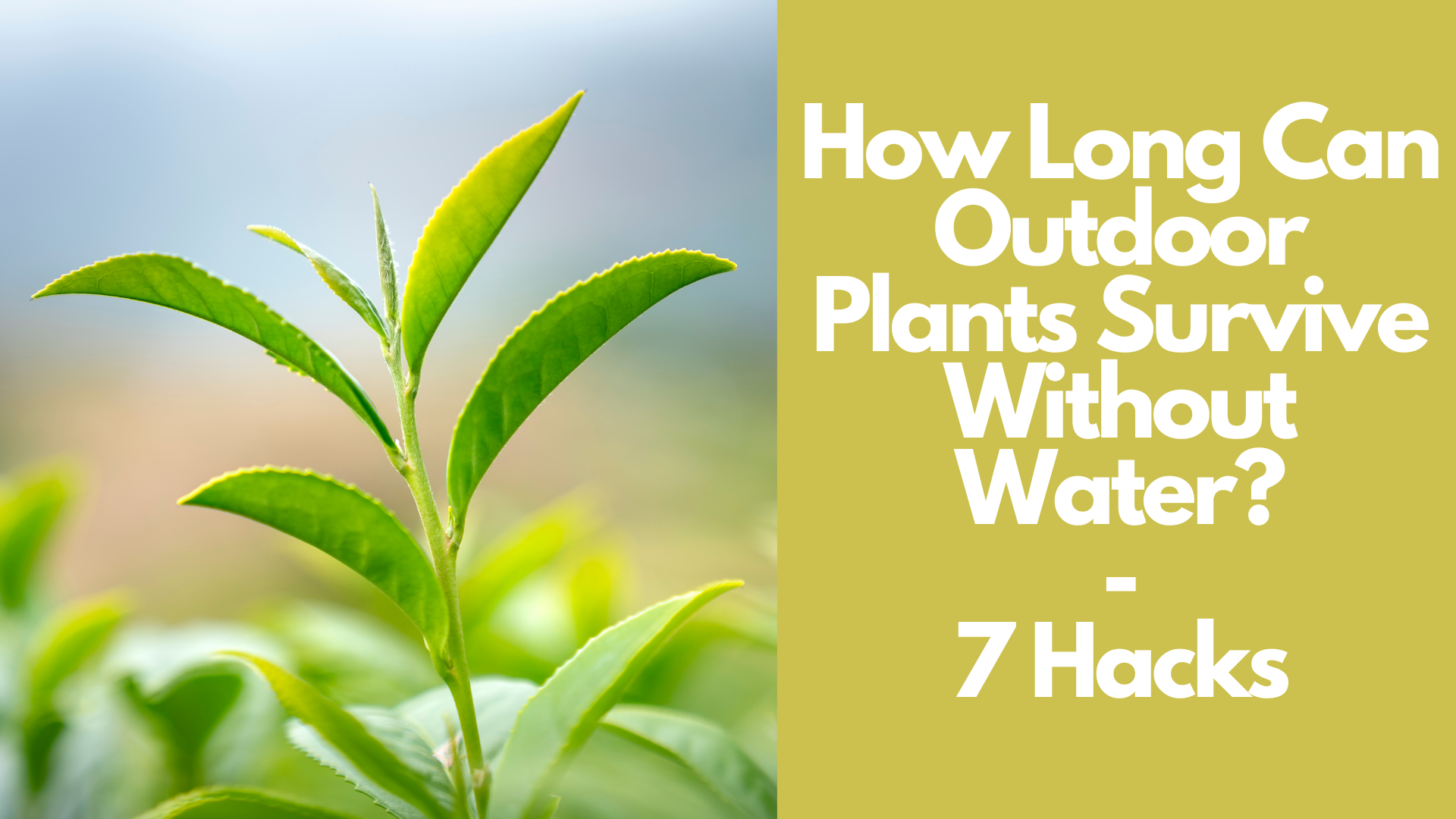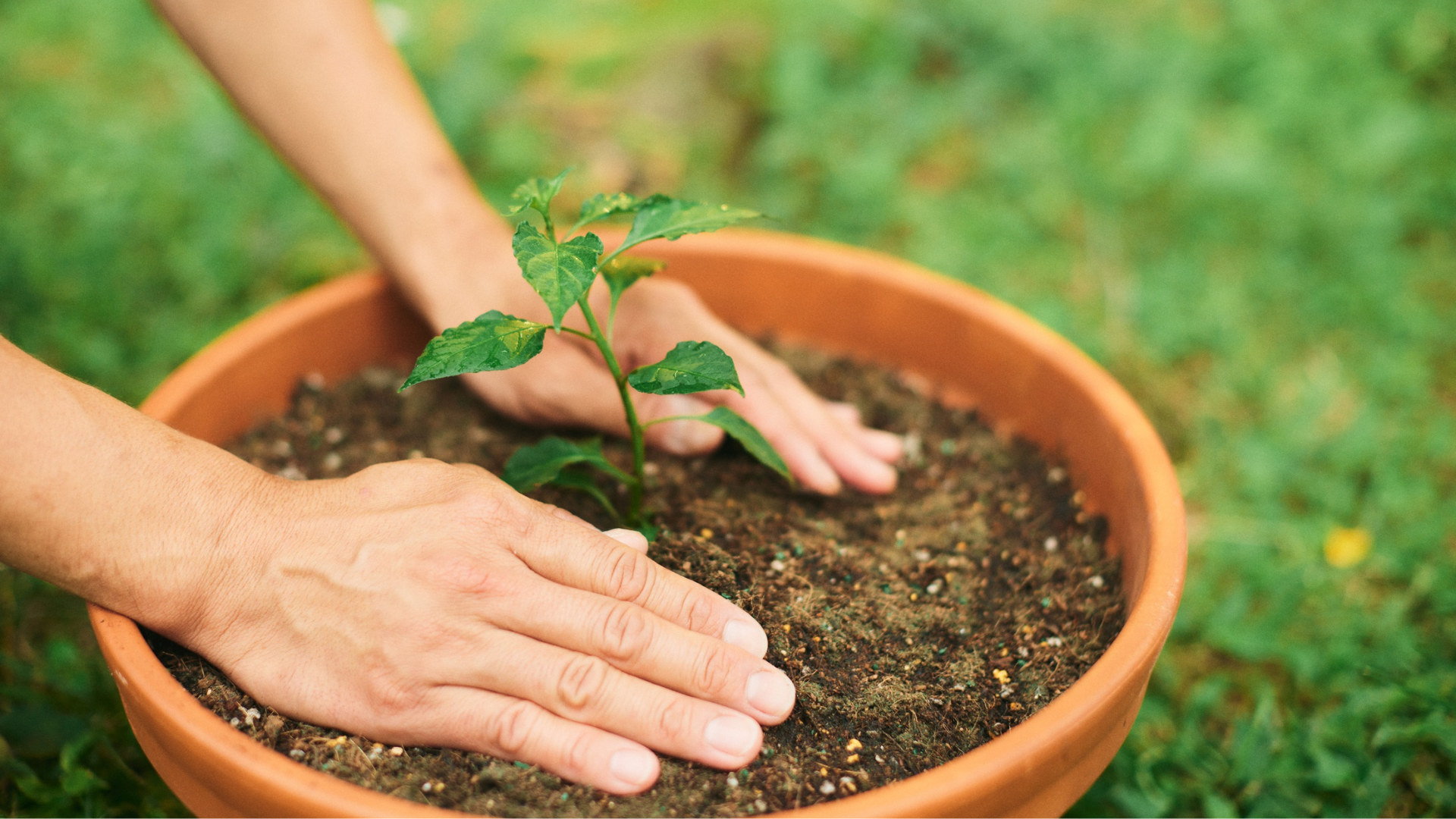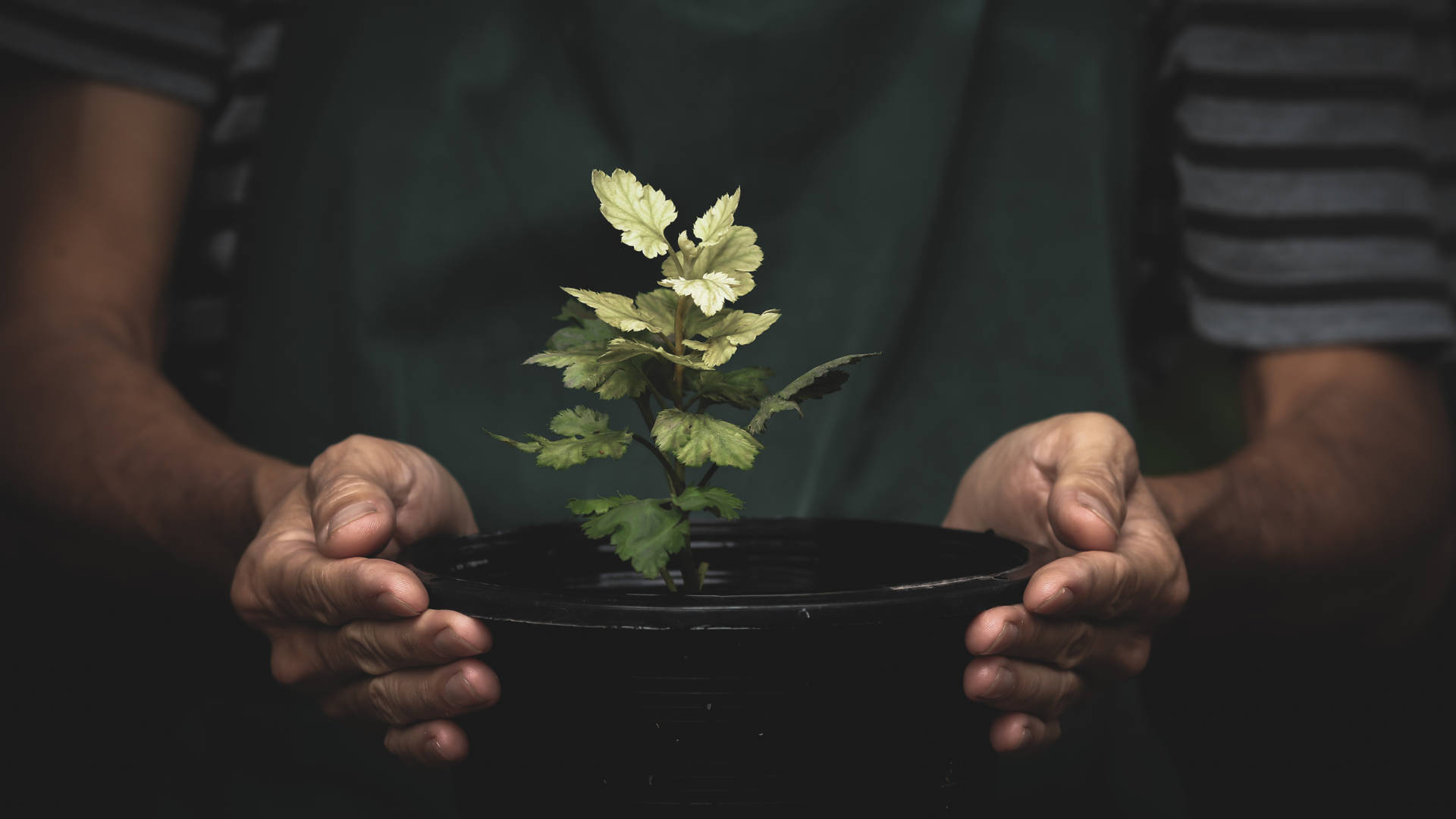How Long Can Outdoor Plants Survive Without Water? Most outdoor plants can’t survive more than a week without water but that timeline depends on more than you think. While some gardeners believe rain alone is enough, plant survival during vacations, heatwaves, or unexpected neglect tells a different story.
This expert guide breaks down drought tolerance by plant type, climate, and care tips. Learn how to protect your garden during dry spells, spot dehydration signs early, and choose resilient plants for low-maintenance gardening. We’ll explore how long different types of plants, like flowers, shrubs, vegetables, and succulents, can go without water. By reading this guide, you’ll be able to know, How Long Can Outdoor Plants Survive Without Water?: 7 Hacks.

How long can outdoor plants survive without water?
The survival time of outdoor plants without water varies based on the type of plant, climate, and soil conditions. On average, here’s how long common outdoor plants can last without water:
- Lawns: 7–10 days
- Flowering Plants: 3–7 days
- Shrubs: 7–14 days
- Trees: 2–4 weeks
- Vegetables: 2–5 days
- Succulents: 2–4 weeks
Understanding your plant type is crucial for proper care. Drought-tolerant plants like succulents and trees can withstand dry periods, while vegetables and flowering plants may need more frequent watering. Properly identifying your plants’ needs ensures healthier growth and better drought resistance.
What are the 7 key factors that influence plant survival without water?
The survival of outdoor plants during dry periods relies on several key factors. Understanding these can help you optimize care and prevent unnecessary stress on your garden. Here are the 7 key factors:
1. Plant Type & Species
Different plants have varying drought tolerance levels. Succulents, for example, can survive weeks without water, while vegetables and flowering plants may need more frequent watering.
2. Soil Type
Well-draining soil allows water to evaporate quickly, while clay soil retains moisture longer, helping plants survive dry periods.
3. Weather & Temperature
Hot, dry conditions increase a plant’s need for water, while cooler, humid weather can extend survival time.
4. Mulching
Mulch plays a crucial role in conserving soil moisture by minimizing evaporation and keeping plant roots cooler, especially important during hot, dry periods.
5. Plant Age
Established plants with deep roots are more resilient to drought, whereas young plants and seedlings may require frequent watering to thrive.
6. Sun Exposure
Plants exposed to full sun use more water than those in shaded areas. Extended time in direct sunlight increases the risk of dehydration and sunburn, highlighting the importance of staying protected when outdoors.
7. Wind & Humidity
High winds and low humidity levels can increase evaporation, causing soil to dry out quicker, leaving plants at risk.
By considering these factors, you can better predict how long your plants can survive without water and take proactive measures to ensure their health during dry spells.
What’s the difference between drought-tolerant and thirsty plants?
Understanding the difference between drought-tolerant and thirsty plants is essential for proper garden care. Knowing which plants need frequent watering and which can survive with less will help you maintain a low-maintenance, water-efficient garden.
What are drought-tolerant plants?
Drought-tolerant plants are specially adapted to survive extended dry conditions, making them ideal for low-water landscapes and hot climates. They have adaptations, like deep root systems, water-storing leaves, or waxy coatings, that help them retain moisture and survive in dry conditions.
Examples of drought-tolerant plants:
- Succulents – Aloe Vera, Agave
- Cacti
- Lavender
- Native Shrubs – Sage, Juniper
What are thirsty plants?
Thirsty plants need frequent watering to stay healthy, particularly in hot or dry weather. With their shallow root systems, they depend on steady moisture to support strong growth. They are less equipped to handle drought stress and often show signs of wilting or dehydration without sufficient water.
Examples of thirsty plants:
- Vegetables – Tomatoes, Lettuce
- Flowering Plants – Petunias, Begonias
- Lawns
- Fruits – Strawberries, Apples
Why knowing the difference between drought-tolerant and thirsty plants important?
Understanding whether your plants are drought-tolerant or thirsty helps in several ways:
- Water conservation
Save water by grouping plants with similar needs together, reducing the overall amount of water used.
- Proper care
Thirsty plants may need more frequent watering, while drought-tolerant plants benefit from less frequent attention.
- Survival in dry spells
During dry spells or vacations, knowing which plants are more resilient helps ensure the health of your garden.
How to tell if your plant is dehydrated and how to save it?
Dehydration can stress your plants and even lead to permanent damage if not addressed quickly. But how do you tell if your plant is dehydrated? And what can you do to revive it? Here’s a comprehensive guide to spotting dehydration signs and saving your plants before it’s too late.
What are the signs of underwatering in plants? How to Spot a Dehydrated Plant
Plants communicate their water needs through visible symptoms. Here are the top signs to help you identify if your plant is suffering from underwatering:
- Drooping leaves
If your plant’s leaves are wilting or drooping, it’s often a sign it’s lacking water. Leaves may lose their turgor pressure and appear limp.
- Dry soil
An easy way to tell if your plant needs watering is by touching the soil, if it feels dry to the touch, it’s time to add moisture. If it’s dry and cracked a few inches down, your plant is likely dehydrated.
- Leaf curling
Dry, curled, or crispy leaves are a clear sign of dehydration, especially around the edges of the leaves. In extreme cases, leaves may even begin to turn brown or yellow.
- Brown leaf tips
One of the first signs of dehydration is brown, crispy leaf edges, particularly in indoor plants like palms or ferns.
- Stunted growth
If your plant isn’t growing or flowering as it should, it could be struggling due to lack of water, leading to slower growth and a general lack of vigor.

What to do if you think a plant is too dry?
If you’ve identified dehydration signs in your plant, it’s important to act quickly. Here’s how to rescue your plant:
- Water slowly and deeply
If the soil is dry several inches deep, water your plant slowly to allow the moisture to penetrate the roots deeply. Make sure water penetrates deeply enough to reach the plant’s root zone for effective hydration and healthy growth.
- Check the drainage
Ensure your plant pot has adequate drainage to prevent water from accumulating. Excess moisture can cause root rot, particularly in stressed plants. If you notice water collecting in the saucer, promptly empty it to prevent root rot and keep your plant’s roots healthy.
- Rehydrate gradually
Some plants, especially succulents, should not be overwatered too quickly. Water gradually over a few days to avoid shocking the plant.
- Mist the leaves
For plants that prefer higher humidity, gently misting the leaves can help increase moisture levels. However, avoid excessive misting on plants sensitive to moisture, as too much water on their leaves can lead to fungal issues or leaf damage.
What are the best emergency watering tips to revive stressed plants?
In an emergency, it’s crucial to give your plant immediate relief to prevent further stress. Here are a few tips:
- Soak the roots
For potted plants, submerge the pot in a bucket of water for 15–30 minutes. This allows the roots to absorb water gradually and prevents shock from rapid watering.
- Use room temperature water
Water your plants with lukewarm or room temperature water to avoid root shock and encourage optimal absorption. Room temperature water is ideal for quick hydration.
- Increase humidity
To combat dehydration from dry air, set up a humidity tray, simply place a shallow dish filled with water and pebbles beneath the plant to boost surrounding moisture levels.
- Trim damaged leaves
If the plant’s leaves are severely wilted or crispy, prune them to conserve energy and help the plant focus on regrowth.
- Move to a shaded area
If your plant is stressed due to dehydration and heat, move it to a shaded area to reduce evaporation and allow the plant to recover.
7 Smart tips to help outdoor plants survive without daily watering
Maintaining a lush garden doesn’t mean you have to water your plants daily. With the right strategies and plant care techniques, you can help your outdoor plants thrive with less frequent watering. Here are some smart, water-saving tips to keep your plants healthy and minimize the amount of water you need to use.
1. Mulching
Mulching is one of the best ways to reduce the need for daily watering. Applying a 2–3 inch layer of mulch around your plants is an effective way to help save them.
Why mulching is important to plants?
- Prevent water evaporation from the soil.
- Maintain consistent soil temperature, shielding roots from harsh heat and cold fluctuations.
- Suppress weed growth, which competes for moisture.
Add organic mulch like fallen leaves, straw, or wood chips; these materials break down over time, feeding the soil and helping it hold moisture more effectively.
2. Choose drought-tolerant plants for your garden
Select plants that are naturally adapted to dry conditions and require less water. Drought-tolerant plants are designed to survive with minimal moisture, making them perfect for low-maintenance gardens.
Examples of drought-tolerant plants:
- Succulents
- Lavender
- Echinacea
- Blanket Flowers
- Cacti
These plants store water in their leaves or roots, allowing them to thrive during dry spells.
3. Water deeply, but less often
Rather than giving your plants light daily watering, opt for deep watering once or twice a week. This practice promotes deeper root growth, enhancing your plants’ drought resilience. It also ensures that the water reaches the root zone, where it’s needed most.
Schedule watering sessions for early morning or late evening to minimize water loss through evaporation. Avoid watering during midday, as the sun can cause the water to evaporate too quickly.
4. Use drip irrigation systems for efficient watering
A drip irrigation system targets water delivery straight to plant roots, significantly reducing water waste. It allows you to water your plants more efficiently, ensuring that each plant gets the appropriate amount of water without over-saturating the soil.
Set your drip system on a timer to ensure consistent watering without daily intervention.
5. Plant grouping
When planting, group plants with similar water requirements together. This allows you to water more efficiently, as you can focus on the specific needs of each group. For example, arrange drought-resistant plants in one area while grouping water-loving plants like vegetables in a separate section.
This helps ensure that you’re not overwatering drought-resistant plants while giving extra care to plants that need more moisture.
6. Use watering gel or crystals
Watering gels or water-retaining crystals are excellent for reducing the need for frequent watering. These crystals absorb water when the soil is wet and release moisture when the soil begins to dry out, providing a steady supply of hydration to the plant roots.
Place crystals in the planting holes when planting new plants or in containers to reduce watering frequency.
7. Provide shade during hot weather
If your plants are exposed to intense sun during hot weather, they may require more water. Providing temporary shade, especially during midday when the sun is at its peak, can help reduce the stress on your plants and minimize their water needs.
Use shade cloths, garden umbrellas, or even tall plants to create a shaded microclimate for sensitive plants.
Watch 10 Drought Tolerant Plants That Will Survive The Driest Conditions | Video
FAQs & Answers related to How Long Can Outdoor Plants Survive Without Water?: 7 Hacks
What happens if i go on vacation for 2 weeks?
If you’re away for 2 weeks, your plants may struggle to survive without water, especially if you’re not using an irrigation system or someone isn’t able to water them. To ensure your outdoor plants stay hydrated, consider these options:
Use a drip irrigation system or self-watering planters that release water gradually.
Consider having a friend or neighbor care for your garden and water your plants while you’re away.
Apply mulch around your plants to lock in moisture and reduce quick evaporation.
Group plants with similar watering requirements in the same area to simplify and optimize your watering routine.
Taking these steps can help your plants survive your vacation without the stress of dehydration.
What to do when outdoor watering is banned in your area?
A watering ban can make it difficult to maintain your outdoor plants, but there are ways to handle the situation:
Opt for drought-tolerant plants that require minimal watering, such as succulents, cacti, or native plants adapted to your area’s climate.
Preserve moisture in your garden by adding mulch, which also helps reduce watering intervals.
Collect rainwater in barrels to use as an alternative during watering bans (check local laws to ensure it’s allowed).
Use efficient watering systems like soaker hoses or drip irrigation, which reduce water wastage and may be allowed under certain restrictions.
Choosing the right plants and water-saving techniques can help you maintain your garden even during a watering ban.
What temperature makes watering more urgent?
Watering becomes more urgent when temperatures exceed 85°F (29°C), as high heat causes soil to dry out quickly. In such conditions, plants require more frequent watering, especially those in containers or in direct sunlight. During extreme heat or drought, monitor soil moisture daily to prevent dehydration.
Will my plants die if i forget to water for a few days?
Forgetting to water your plants for a few days is unlikely to cause permanent damage if they are healthy and established. However, young plants, vegetables, and flowers may show signs of stress, such as wilting or yellowing leaves, if left without water for too long. Timely watering and monitoring for signs of dehydration are crucial to protect your plants from lasting damage.
What happens to plants if it only rains once a week?
If it rains once a week, your plants may get a good soaking, but it depends on how much rain and the type of plants you have:
Drought-tolerant plants may thrive on weekly rainfall, needing little additional water.
Vegetables and flowering plants, on the other hand, might require more consistent moisture, especially if the rain doesn’t soak deeply into the soil or doesn’t occur during the hotter months.
Check the soil moisture after rainfall. If the soil is still dry a few inches below the surface, consider supplementing with extra watering.
Rain can help reduce your water usage, but it’s important to monitor soil moisture to ensure your plants aren’t still dehydrated between rainfalls.
Conclusion
Understanding how long outdoor plants can survive without water depends on various factors like plant type, soil, and climate. By choosing drought-tolerant plants, using efficient watering techniques, and being mindful of environmental conditions, you can ensure your garden thrives even during dry spells. Whether you’re going on vacation or facing a heatwave, these tips will help you maintain a healthy, low-maintenance garden. Stay informed about your plants’ needs to enjoy a flourishing garden, no matter the weather!
By reading this guide, I hope you got the full idea of How Long Can Outdoor Plants Survive Without Water?: 7 Hacks.
Please share this How Long Can Outdoor Plants Survive Without Water?: 7 Hacks with your friends and do a comment below about your feedback.
We will meet you on next article.
Until you can read,https://gardengeo.com/how-to-care-for-indoor-shamrocks-year-round-tips/
